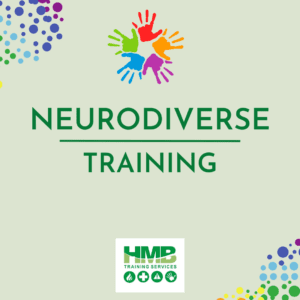In today’s world of employment and working in any workplace it can be challenging in many ways. Here we look at 10 tips to help neurodivergent employees. Creating an inclusive environment isn’t just a moral obligation—it’s a smart business decision.
Neurodivergent employees, including those with autism, ADHD, dyslexia, and other conditions, bring unique strengths, perspectives, and creativity to any business. However, employees can often face challenges in workplaces that aren’t designed with their needs in mind.
As an employer, small adjustments can go a long way in empowering neurodivergent employees to thrive. Whether it’s through clearer communication, flexible working arrangements, or tailored support systems, these changes don’t just benefit individuals—they enhance the entire workplace culture.
In this blog, we’ll explore ten practical ways you can support neurodivergent employees, ensuring they feel valued, understood, and able to contribute their best.
Overview of Neurodiversity
he term “neurodivergent” refers to individuals whose neurological brain and thinking differs from what is typically expected or considered “neurotypical.” While neurotypical individuals often process information in ways that align with societal norms, neurodivergent individuals may experience the world differently. These differences can manifest in various ways, including:
- Sensory Processing: Some neurodivergent individuals may be hypersensitive to sounds, lights, textures, or smells, while others may be less sensitive to sensory input.
- Communication Styles: Neurodivergent individuals may have unique ways of expressing themselves, such as relying on direct communication, struggling with social cues, or excelling in written communication over verbal interaction.
- Cognitive Strengths: Many neurodivergent individuals exhibit remarkable strengths, such as heightened creativity, problem-solving abilities, pattern recognition, or exceptional focus in areas of interest.
Examples of Neurodivergent Conditions
- Autism Spectrum Disorder (ASD):
Autism encompasses a broad spectrum of traits and characteristics. Individuals with autism may excel in areas like pattern recognition or logical reasoning while experiencing challenges with social communication or sensory sensitivities. - Attention Deficit Hyperactivity Disorder (ADHD):
ADHD is characterised by traits such as impulsivity, hyperactivity, and difficulty with sustained attention. However, individuals with ADHD often possess incredible energy, creativity, and the ability to think “outside the box.” - Dyslexia:
A learning difference that primarily affects reading and writing, dyslexia is often accompanied by strengths in visual thinking, problem-solving, and creativity. - Dyspraxia:
Also known as developmental coordination disorder (DCD), dyspraxia affects physical coordination and motor skills but is often linked to strengths in determination and problem-solving. - Tourette Syndrome:
Characterized by involuntary tics or repetitive movements, individuals with Tourette syndrome often demonstrate resilience, adaptability, and strong verbal communication skills.
The Neurodiversity Movement
The neurodiversity movement advocates for the rights, inclusion, and empowerment of neurodivergent individuals. It challenges outdated narratives that focus solely on deficits and instead highlights the value of neurodivergent traits in society.
One of the key principles of the movement is acceptance rather than just awareness. Neurodiversity advocates stress that neurodivergent individuals do not need to be “fixed” but rather supported through accommodations and understanding.
The movement also promotes systemic change in areas like:
- Education: Encouraging schools to adopt teaching methods that accommodate diverse learning styles.
- Workplaces: Advocating for inclusive hiring practices and workplace accommodations.
- Healthcare: Shifting from a deficit-based approach to one that emphasizes strengths and well-being.
Why Neurodiversity Matters
Embracing neurodiversity is crucial for fostering innovation, creativity, and collaboration. Neurodivergent individuals often bring unique perspectives that can lead to breakthroughs in fields ranging from technology and science to the arts and education.
For example:
- Albert Einstein: Believed to have traits consistent with autism.
- Greta Thunberg: An outspoken advocate for climate change awareness, who credits her autism for her focus and drive.
- Steve Jobs: Known for his perfectionism and innovative thinking, often linked to traits of neurodivergence.
By valuing neurodivergent individuals, society can benefit from their contributions while creating more equitable and inclusive communities.
Neurodiversity is Strength in Diversity
Recognizing and embracing neurodiversity is not just about accommodation—it’s about empowerment. By shifting our perspective to see neurological differences as strengths, we can create environments that allow everyone to reach their full potential.
Neurodiversity reminds us that diversity in thought and experience is as vital as diversity in appearance or culture. Together, we can build a world that celebrates and supports the brilliance of all minds.
10 Tips to Help Neurodivergent Employees
Creating an inclusive workplace benefits everyone, especially neurodivergent employees who often thrive in supportive and understanding environments. Here are ten actionable steps employers can take to foster inclusivity:
1. Provide Neurodiversity Training
Educate staff and managers on neurodiversity to break down stereotypes and foster understanding. Training sessions can address common challenges, strengths, and communication tips for working with neurodivergent colleagues.
2. Offer Flexible Working Arrangements
Many neurodivergent individuals benefit from flexible hours or remote working options to manage sensory sensitivities, focus better, or maintain a healthy work-life balance.
3. Create Sensory-Friendly Workspaces
Offer quiet zones or adjustable workstations to reduce sensory overload. Noise-cancelling headphones, adjustable lighting, or a choice of desk locations can make a big difference.
4. Focus on Strength-Based Roles
Identify each employee’s strengths and align tasks with their unique abilities. For example, an employee with exceptional attention to detail might excel in quality control or data analysis roles.
5. Use Clear and Direct Communication
Avoid ambiguous instructions. Provide written and verbal guidance, use clear language, and allow opportunities for employees to ask clarifying questions.
6. Implement Workplace Accommodations
Accommodations don’t have to be costly. Examples include allowing extra breaks, using assistive technology, or providing structured schedules. Encourage employees to discuss what works best for them.
7. Establish Support Networks
Create employee resource groups for neurodivergent staff to connect and share experiences. Pairing them with mentors or allies can also offer additional guidance and support.
8. Review Recruitment Processes
Adapt hiring practices to be more inclusive. Offer alternatives to traditional interviews, such as skills-based assessments, and ensure job descriptions focus on essential skills rather than generic traits like “excellent communicator.”
9. Encourage Feedback and Collaboration
Regularly ask employees for input on how to improve workplace inclusivity. Open communication helps address concerns proactively and shows that their voices are valued.
10. Celebrate Neurodiversity
Highlight the contributions of neurodivergent employees in company communications or events. By celebrating their achievements, you create a culture that values diversity in all forms.
Why It Matters
Supporting neurodivergent employees isn’t just the right thing to do—it’s also good for business. Inclusive workplaces are proven to be more innovative, productive, and successful. By taking these steps, you can create an environment where everyone can thrive.
Our Neurodiversity Training – 10 Tips to Help Neurodivergent Employees
Neurodiversity Training for the Workplace for managers, HR personnel and colleagues. The session aims to increase awareness of neurodiversity in the workplace and allow attendees the opportunity to discuss workplace specific circumstances, develop strategies to support a neurodivergent workforce and identify the next steps for their organisation.

The course includes:
- Overview of Neurodiversity
- Why neurodiversity is important
- Associated neurodevelopmental conditions
- Neurodiversity, mental health and wellbeing
- Overview of Autism Spectrum Conditions
- Communication differences
- Strategies to ensure effective communication
- Cognitive Differences in autism
- Strengths and challenges
- Sensory Differences
- Breakdown of senses
- Hyper/Hypo sensitivity
- Environmental considerations
- Neurodiversity best practice in the workplace
- Examples of reasonable adjustments:
- Recruitment processes
- In the workplace
- Examples of reasonable adjustments:
Our Neurodiversity Training is fully interactive with lots of practical games and tasks to perform, including a lot of opportunities for discussions to embed learning and to show 10 Tips to Help Neurodivergent Employees
More information click here; https://www.hmbtrainingservices.co.uk/latest-news/offer/neurodiversity-training-for-the-workplace
Or you can call us on 01543 4533338



